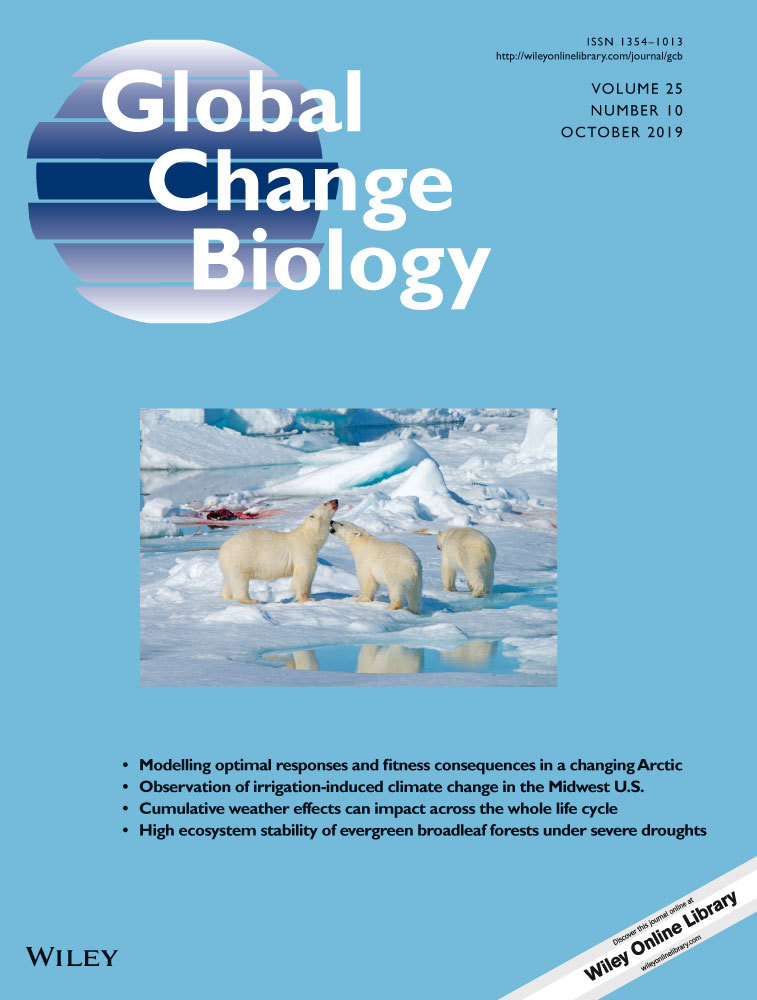Corrigendum
In the paper by Maavara et al. (2019), N2O emissions previously reported in the literature and synthesized in Table 1 were incorrectly reproduced. This includes estuarine N2O emissions from Law et al. (1992), Bange et al. (1996) and De Wilde and De Bie (2000)(also incorrectly reported in the review by Murray et al., 2015). The correct version is shown below.
| Study | N loads | N load value (103 Gg N/year) | Emission factor (%) | Global N2O emission (Gg N/year) | N2O emission rate (g N m−2 year−1) |
|---|---|---|---|---|---|
| Rivers (662 × 103 km2) | |||||
| Seitzinger and Kroeze (1998) and Seitzinger et al. (2000)a | NEWS model | 41.6 DIN | 2.5 | 1,050 [190–1,870] | 1.59 [0.29–2.82] |
| Kroeze et al. (2005)a | NEWS model | 50.3 DIN | 2.5 | 1,256 | 1.90 |
| Mosier et al. (1998)b | IPCC | 65 TN | 0.75 | 502 | 0.75 |
| Kroeze et al. (2010)c | NEWS model | 88 TN 60 TDN | 0.25 or 2.5 | 200–1,600 | 0.30–2.42 |
| Beaulieu et al. (2011)d | IPCC | 90 TN | 0.75 | 680 | 1.03 |
| Hu et al. (2016)e | NEWS | 18.8 DIN | 0.17 [0.08–0.31] | 32.2 [12.4–66.9] | 0.05 [0.02–0.10] |
| This study | Derived from NEWS | 184.3 TN | Scenario dependent | 45.6–49.4 | 0.07 |
| Reservoirs (45 × 103 km2) | |||||
| Deemer et al. (2016)f | Bottom-up (n = 58) | NA | NA | 30 [20–70] | 0.67 [0.44–1.56] |
| This study | Derived from NEWS | 61 TN | Scenario dependent | 42.4–71.5 | 0.94–1.6 |
| Estuaries (1,067 × 103 km2) | |||||
| Law et al. (1992) | Bottom-up (n = 5) | NA | NA | 70 | 0.07 |
| Bange et al. (1996) | Bottom-up (n = 12) | NA | NA | 1,180–1,810 | 1.1–1.7 |
| Robinson et al. (1998) | Bottom-up (n = 4) | NA | NA | 130–450 | 0.12–0.42 |
| Seitzinger and Kroeze (1998) | NEWS model | 20.8 DIN | 1 | 220 [70–690] | 0.21 [0.06–0.65] |
| De Wilde and De Bie (2000) | Bottom-up (n = 1) | NA | NA | 480 | 0.45 |
| Kroeze et al. (2005) | NEWS model | 25 DIN | 1 | 250 | 0.23 |
| Kroeze et al. (2010)g | NEWS model | 44 TN 30 TDN | 0.25 or 2.5 | 100–600 | 0.09–0.56 |
| Murray et al. (2015)h | Bottom-up (n = 56) | NA | NA | 310 [150–910] | 0.29 [0.14–0.85] |
| This study | Derived from NEWS | 97.5 TN | Scenario dependent | 60.0–155.4 | 0.06–0.15 |
- a Based on four studies with 0.3% and 3% (N2O:N2) for DIN load of <10 and >10 kg N ha−1 year−1, respectively.
- b Based on six studies made in Europe and North America.
- c IPCC default EF5-r (0.25%) was used for low case and 2.5% was assumed as the high case based on Seitzinger and Kroeze (1998).
- d Based on observations conducted for 72 headwater streams in North America with 0.25% observed for denitrification and 0.5% assumed for nitrification.
- e Based on meta-analysis of global data with 169 observations covering a wide range of rivers.
- f Based on mean flux density from 58 measurements, multiplied by reservoir surface area (GRanD, Lehner et al., 2011).
- g IPCC default EF5-r (0.25%) was used for low case and 2.5% was assumed as the high case based on Seitzinger and Kroeze (1998).
- h Based on mean flux density from 56 measurements, multiplied by estuarine and tidal surface areas (average of Dürr et al., 2011; Woodwell et al., 1973).
Subsequently, the range of cited literature values of global estuarine N2O emissions on page 484 was incorrect.




